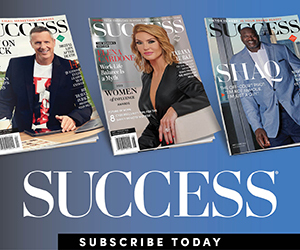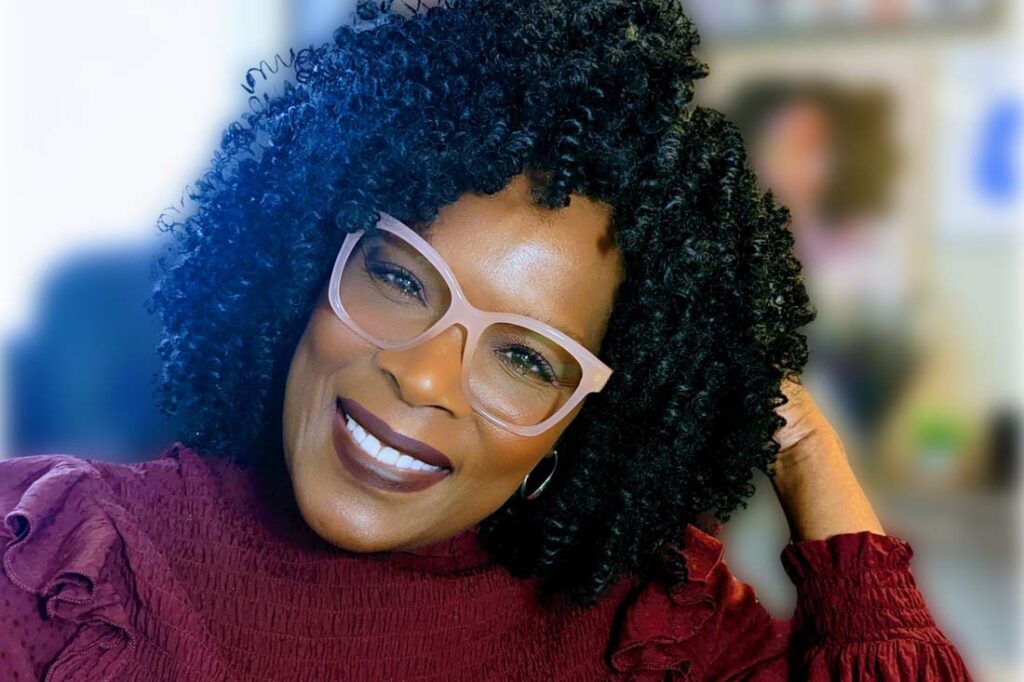The first thing I ask when I sit down with Jen Mahone-Rightler, founder of the diversity and inclusion firm Elements2Inclusion, is about her climb up the corporate ladder as a Black woman—and how her work took her from Kenosha, Wisconsin, to senior roles in diversity, equity and inclusion (DEI leadership) at companies like Epsilon and Boeing.
The first thing Mahone-Rightler tells me? “I didn’t have a traditional ‘climb,’ that’s for sure,” she laughs.
Raised by her grandparents, the youngest in a family of nine kids, Mahone-Rightler grew up with dreams of being an architect. When she stared at the wood paneling that lined the rooms of their home, she saw buildings—whole cities—materializing before her eyes in the patterns of the grain.
She studied architectural engineering at Prairie View A&M University and, with the help of her father, got a job at a firm. From there, wide-eyed and ready with her portfolio in hand, she spent a long time making coffee for the architects.
If you don’t recognize your value, others won’t either
This was not the dream a young Mahone-Rightler had for herself. So, when she was approached to do recruiting instead, she walked into her boss’s office and told him she was leaving. He surprised her by asking what she brought to work in her portfolio every day and lightly reprimanded her for not showing it to him sooner—and for not standing up for herself more assuredly.
Then, he hit her with some hard wisdom: “You allowed us to treat you like a secretary. And so that’s what you got treated like.”
“Yeah,” she says. “Lesson learned.”
Even today, Mahone-Rightler doesn’t feel bitter about that experience—it’s not in her nature to dwell on what could have been—but it did put her on a path that would eventually lead to her becoming a renowned DEI innovator.
Changing the workforce and implementing DEI initiatives from within
First, that path took her to human resources. “I wanted to go into HR because I wanted to have an understanding of how we can change the system,” she explains. “That starts with where the system is born within corporations. And that was human resources. And so that’s really where I wanted to insert myself.”
She thought about her son, growing up biracial in America. She didn’t want him to enter a career someday feeling like he’d have to choose—like his workplace would force him to choose—between Black and white culture. Couldn’t he just be… Ian?
But this too would turn out to be a lesson in the limits of what one person looking to make a change could achieve in the workplace. Human resources, she found, had its benefits, but it wasn’t a place that had all the resources for every human.
“We’re supposed to make sure that we fight for equality—that’s what people think. But that’s not human resources’ job,” she says. “I tell people all the time: Diversity, equity, and inclusion wasn’t set up to be successful in corporate America. Because if it was, it would be part of the structure. It would be part of the functions, just like accounting and marketing.”
Learning the world of HR did have its benefits though. Mahone-Rightler was learning how the system operated from within and how to navigate it to her advantage.
“What I wanted to do is make sure that as we went into human resources, and as we were talking about these things, it became part of how we did business,” she says. “How do we integrate [DEI initiatives] into our systems—our business systems and our business practices—so that when you have people show up, there’s a level of comfort, there’s a level of diversity and inclusion that they organically see?”
As her unconventional ascent up the corporate ladder continued—from manager of inclusion practices at CDW to corporate vice president of diversity and inclusion at New York Life Insurance Company and beyond—she started to see that many of the companies that relied on her expertise were making similar mistakes.
Creating a map to help companies navigate DEI initiatives
For one, many companies were trying to apply a one-size-fits-all approach to diversity and inclusion when there just isn’t a panacea for equity and equality.
“It’s the easy button,” she chuckles. “And if it was easy, we would all do it, and we would have all figured it out by now.”
The “easy button” approach was making her job harder. (Frankly, it was an insult to her work in D&I). Therefore, in 2013, Mahone-Rightler started thinking about setting out on her own—and that was the start of Elements2Inclusion.
“I said, ‘I’m going to start my own emerging leaders development firm, where I can help people navigate how to get to where they want to go,’” she says. “Elements2Inclusion was all around: It’s not a one-size-fits-all.”
She based her philosophy on the periodic table of elements in chemistry—everyone’s formula is a little different, and no two people are quite the same.
And very little stays the same in DEI. Even Mahone-Rightler herself has found that, over her two-decade career, things are always evolving.
DEI initiatives are evolving with the ever-changing
“What I’ve learned to do is—I’ve learned to listen differently to how diversity is changing. And what I’ve also tried to share to executives, practitioners in this space, is if we want to win at this game of inclusion, it means that we have to include the new generation in our decision making,” she explains.
Is it a challenge to get the folks in the C-suite to see the value in DEI initiatives? Sometimes. But she isn’t intimidated. “If I go in and have these conversations with executives, whether they’re old school, new school, new age, new world, all they want to know is: What is it about diversity that is going to help the bottom line of the business?” she says.
Her goal is to connect the dots, to demonstrate that inclusion has a connection to the market. How much money is being left on the table if your workforce is not diverse? How will your clients view your organization if they’re investing in diversity and you’re not?
“Cultural fluency is a nonnegotiable, as far as competency,” Mahone-Rightler says. “You have to understand the different cultures that exist within your corporate structures. If you don’t, you’ve already lost.”
Photo by Kirk Rightler.



